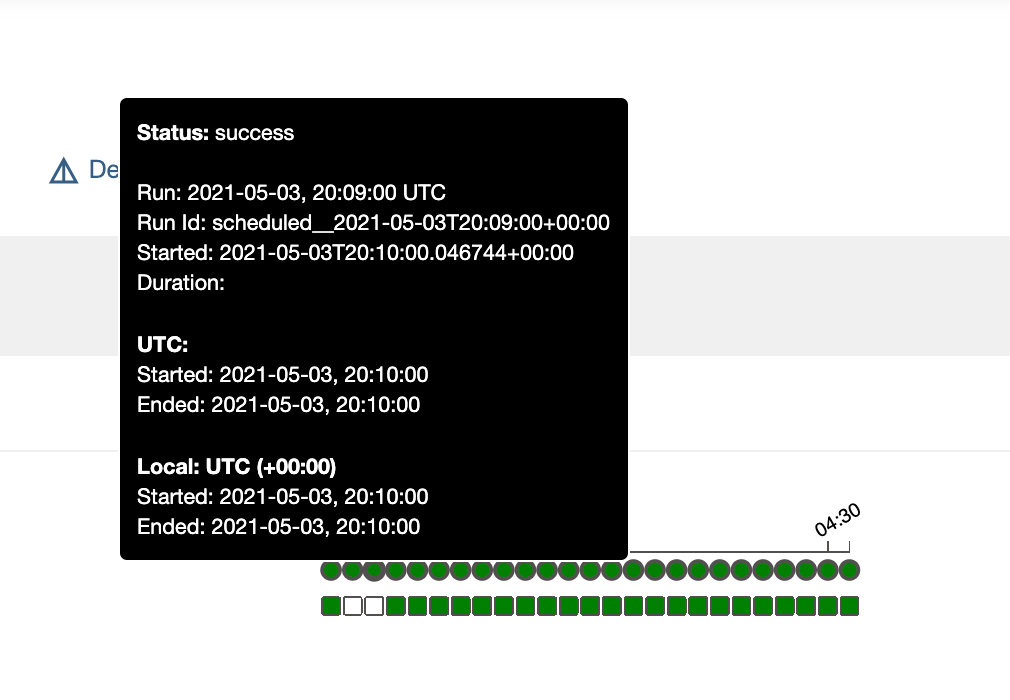

You should share arguments between the main DAG and the SubDAG by passing arguments to the SubDAG operator (as demonstrated above) You can zoom into a SubDagOperator from the graph view of the main DAG to show the tasks contained within the SubDAG:īy convention, a SubDAG's dag_id should be prefixed by the name of its parent DAG and a dot ( parent.child) Defaults to :type email: str """ get_ip = GetRequestOperator ( task_id = 'get_ip', url = "" ) ( multiple_outputs = True ) def prepare_email ( raw_json : Dict ) -> Dict : external_ip = raw_json return with DAG ( dag_id = DAG_NAME, default_args = args, start_date = days_ago ( 2 ), schedule_interval =, tags = ) as dag : start = DummyOperator ( task_id = 'start', ) section_1 = SubDagOperator ( task_id = 'section-1', subdag = subdag ( DAG_NAME, 'section-1', args ), ) some_other_task = DummyOperator ( task_id = 'some-other-task', ) section_2 = SubDagOperator ( task_id = 'section-2', subdag = subdag ( DAG_NAME, 'section-2', args ), ) end = DummyOperator ( task_id = 'end', ) start > section_1 > some_other_task > section_2 > end In much the same way a DAG instantiates into a DAG Run every time it's run, Tasks specified inside a DAG also instantiate into Task Instances along with ( default_args = DEFAULT_ARGS, schedule_interval = None, start_date = days_ago ( 2 ), tags = ) def example_dag_decorator ( email : str = ): """ DAG to send server IP to email. Those DAG Runs will all have been started on the same actual day, but their execution_date values will cover those last 3 months, and that's what all the tasks, operators and sensors inside the DAG look at when they run. It's been rewritten, and you want to run it on the previous 3 months of data - no problem, since Airflow can backfill the DAG and run copies of it for every day in those previous 3 months, all at once. DAG Runs can run in parallel for the same DAG, and each has a defined execution_date, which identifies the logical date and time it is running for - not the actual time when it was started.Īs an example of why this is useful, consider writing a DAG that processes a daily set of experimental data. Įvery time you run a DAG, you are creating a new instance of that DAG which Airflow calls a DAG Run.
#Airflow dag code#
If you have to apply settings, arguments, or information to all your tasks, then a best practice and recommendation is to avoid top-level code which is not part of your DAG and set up default_args.With DAG ( "my_daily_dag", schedule_interval = "0 * * * *" ).
#Airflow dag how to#
How to write DAGs following all best practices You should be able to trigger your DAGs at the expected time no matter which time zone is used. Understanding how timezones in Airflow work is important since you may want to schedule your DAGs according to your local time zone, which can lead to surprises when DST (Daylight Saving Time) happens.

It is highly recommended not to change it.ĭealing with time zones, in general, can become a real nightmare if they are not set correctly. Timezones in Airflow are set up to UTC by default thus all times you observe in Airflow Web UI are in UTC. Now that you know what DAG is, let me show you how to write your first Directed Acyclic Graph following all best practices and become a true DAG master! 🙂 The timezone in Airflow and what can go wrong with them

You probably already know what is meaning of the abbreviation DAG but let’s explain again.ĭAG (Directed Acyclic Graph) is a data pipeline that contains one or more tasks that don’t have loops between them.

If you’ve previously visited our blog then you couldn’t have missed “ Apache Airflow – Start your journey as Data Engineer and Data Scientist”. What is DAG? What is the main difference between DAG and pipeline?


 0 kommentar(er)
0 kommentar(er)
